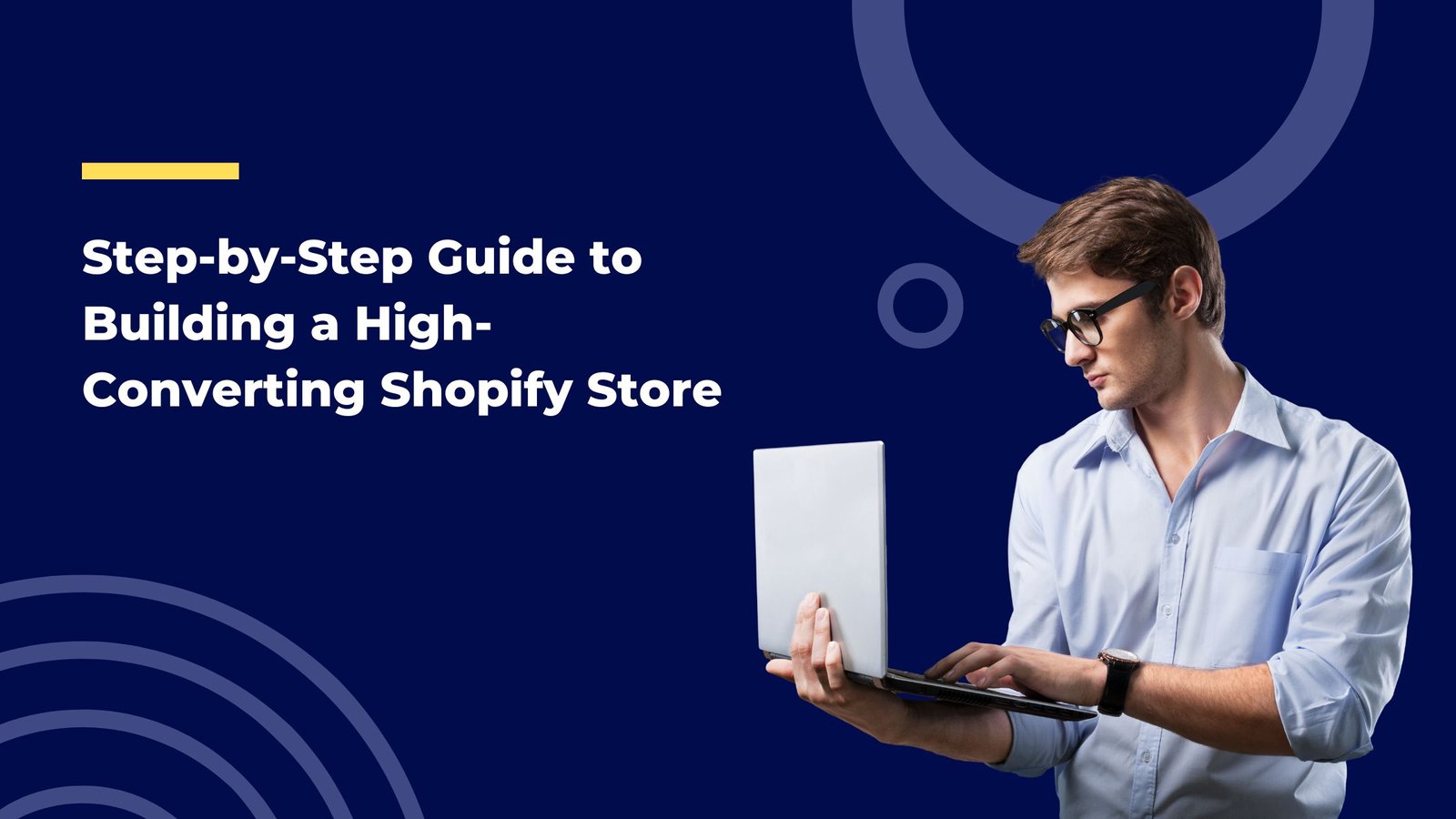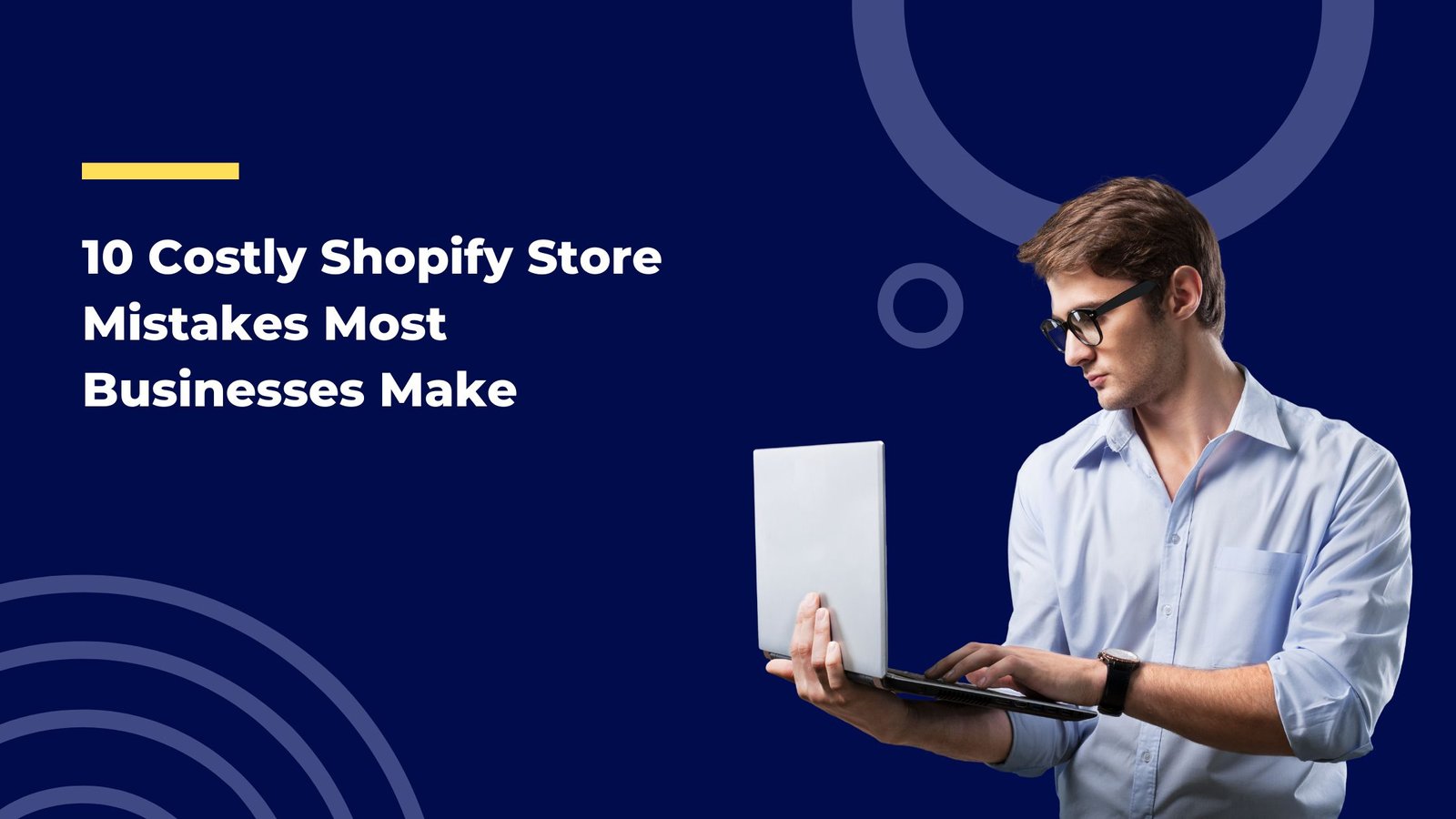
How to Choose the Perfect Shopify Theme for Your Brand
Why Choosing the Right Shopify Theme Matters for Your Brand
Your theme is more than a template. It sets the tone for your entire store. It shapes trust, speed, and ease of use. It affects SEO and conversion. It even influences your brand voice.
Here’s why the theme decision matters:
- First impression: Shoppers judge your store in seconds. Clean layouts and clear typography build trust fast.
- Performance: A lightweight, optimized theme improves speed and Core Web Vitals. Speed boosts conversions and rankings.
- Conversion flow: Good themes guide shoppers from product discovery to checkout with fewer clicks.
- Scalability: A flexible theme grows with your catalog, content, and campaigns.
- Brand voice: Colors, spacing, and images should reflect your identity without heavy customization.
Shopify Theme Basics: How Themes Work and What to Expect
Shopify themes control how your store looks and behaves. They use Shopify’s Online Store 2.0 framework. That means you get sections everywhere, drag-and-drop layouts, and flexible templates.
Key parts of a theme:
- Templates: Preset layouts for home, product, collection, blog, and pages.
- Sections and blocks: Add, remove, and reorder content without code.
- Styles: Fonts, color palette, spacing, and buttons remain consistent.
- Navigation: Menus, mega menus, filters, search, and breadcrumbs.
- Theme settings: Site-wide controls for speed, UX, and branding.
Most modern themes support metafields, advanced filters, and dynamic content. Many also include quick view, sticky add-to-cart, and swatches.
Aligning Your Theme With Your Brand Identity and Story
Your theme should feel like your brand. Not the other way around. Start with your identity:
- Brand vibe: Minimal, bold, playful, luxury, earthy, techy? Choose a design style that matches.
- Imagery: Hero images or video? Dark or light backgrounds? Product-heavy or lifestyle-led?
- Typography: Serif for premium. Sans-serif for modern. Readability matters on mobile.
- Color use: Limit your palette. Use contrast for clarity and accessibility.
Browse theme demos with your assets in mind. Ask: Would this layout make our products shine? Would our brand voice feel at home here?
Free vs Paid Shopify Themes: Which Is Best for You?
Shopify’s free themes are fast, clean, and well-supported. Paid themes offer more layouts, niche features, and styling options. The choice depends on your needs.
Pick a free theme if:
- You’re just starting and want to go lean.
- Your catalog is small and simple.
- You plan light customization.
Pick a paid theme if:
- You need advanced filters, mega menus, or unique product pages.
- You run promotions, bundles, subscriptions, or wholesale.
- You want multiple layouts and visual styles.
- You want built-in CRO features and upsells.
Either way, ensure the developer updates the theme often and offers responsive support.
Theme Features Checklist: What Your Store Actually Needs
A good theme serves your business goals. List your must-haves before shopping. Here’s a quick checklist:
- Navigation: Mega menu, nested menus, breadcrumbs, predictive search.
- Catalog: Filters by size, color, price, tags; collection banners; sorting.
- Product page: Variant swatches, size guide, sticky add-to-cart, image zoom, video support, trust badges.
- Checkout helpers: Cart drawer, cart notes, shipping estimator, upsells.
- Content: Blog layouts, landing page sections, FAQs, reviews.
- Marketing: Popups (or app support), announcement bar, promo grid, countdowns.
- International: Multi-currency, multi-language, Shopify Markets support.
- Accessibility: Keyboard navigation, alt text, contrast, ARIA labels.
Add nice-to-haves only if they support conversions. More features are not always better. Focus on what helps users buy.
Speed and Performance: Fast Shopify Themes Win
Speed affects everything—SEO, bounce rate, and sales. Choose a theme built for performance. Look for:
- Lazy loading: Images and videos load only when needed.
- Optimized code: Lightweight CSS and JavaScript. Minimal libraries.
- Image handling: WebP support and responsive image sizes.
- App impact: Avoid themes that rely on many external scripts.
Test theme demos with PageSpeed Insights or Lighthouse. Check mobile scores first. A small trade-off in visuals is okay if it keeps pages fast.
Mobile-First Shopify Themes for Modern Shoppers
Most traffic is mobile. Your theme should be mobile-first, not just mobile-friendly. Check:
- Thumb reach: Buttons and filters easy to tap.
- Navigation: Simple menus and sticky headers.
- Image crop: Product photos remain clear on small screens.
- Cart: Drawer or page that loads fast and keeps context.
On mobile, less is more. Clean layouts help users scan and buy.
Conversion-Focused Design: Turn Browsers Into Buyers
Design should support your conversion rate optimization (CRO). Look for themes that make buying simple:
- Clear CTAs: Add to Cart and Checkout buttons stand out.
- Trust signals: Reviews, ratings, badges, shipping and returns info.
- Product discovery: Quick view, quick add, recommended products, recently viewed.
- Social proof: UGC galleries or review widgets.
- Minimize friction: Fewer steps to add to cart and checkout.
Small details matter, like size guides near the size selector, or sticky add-to-cart on long product pages.
SEO-Ready Shopify Themes and On-Page Best Practices
A theme won’t make you rank alone. But it should support solid SEO. Look for:
- Clean HTML structure: Logical headings and schema support.
- Metadata control: Title tags, meta descriptions, and alt attributes.
- URL structure: Works cleanly with Shopify’s native URLs.
- Internal linking: Collections, breadcrumbs, and related products.
- Fast load times: Helps with Core Web Vitals.
Bonus: Choose themes with strong blog layouts. Helpful content brings organic traffic and builds authority.
Customization, Sections, and Scalability as You Grow
Your theme should work on day one and scale with your brand. Check how much you can change without code:
- Sections everywhere: Build landing pages with drag-and-drop blocks.
- Flexible templates: Different layouts for different collections or products.
- Metafields: Show unique details like materials, care, ingredients, or sizing.
- Custom CSS/JS areas: For light tweaks without editing theme files.
If you plan a rebrand or product line expansion, pick a theme with multiple style presets. It saves time later.
App Compatibility, Shopify 2.0, and Future-Proofing
Your theme should play well with apps. Poor compatibility hurts performance and breaks layouts. Consider:
- Online Store 2.0 support: JSON templates, app blocks, and dynamic sources.
- Popular apps: Reviews, subscriptions, loyalty, bundles, upsells, search, and filter apps.
- Minimal dependence: Built-in features reduce the need for heavy apps.
- Update cadence: Developers who ship updates keep you current with Shopify changes.
Ask for documentation and a changelog. Active support now prevents headaches later.
Global Selling: Multi-Currency, Localization, and Accessibility
If you sell internationally, your theme must support:
- Shopify Markets: Pricing, duties, and regional content.
- Multi-currency and language: Auto-detection and manual switching.
- Right-to-left (RTL): If you target Arabic or Hebrew audiences.
- Accessibility basics: Contrast, keyboard navigation, focus states, and alt text.
Inclusive design grows your market and improves user experience for everyone.
How to Compare Shopify Themes: A Step-by-Step Process
We use a simple process at Stymeta to cut through noise and find the right theme fast.
- Define your goals: List the top three outcomes. Examples: Raise conversion, improve speed, support subscriptions.
- Map your user journeys: How do shoppers find, compare, and buy your products?
- List must-have features: Use the checklist above. Keep it short and strict.
- Pick 5–7 themes: Filter by niche, catalog size, and demo style.
- Test demos: Check mobile UX, speed, navigation, and product pages.
- Score each theme: Use a simple 1–5 score for UX, speed, features, and brand fit.
- Install trial themes: Load sample products and your images. Test real flows.
- Check app compatibility: Add core apps and watch for layout issues.
- Decide with data: Pick the theme with the best overall score and lowest complexity.
Common Mistakes to Avoid When Picking a Theme
- Choosing by looks only: A pretty home page won’t fix a clumsy product page.
- Ignoring mobile: Desktop-first designs often fail on phones.
- Feature overload: Extra sliders and effects can slow your store.
- Copying a competitor: Their brand, catalog, and apps may differ from yours.
- Skipping support: Cheap, unmaintained themes cost more over time.
- No test plan: Launching without demo tests leads to surprises.
Real Examples: Theme Picks by Store Type and Catalog Size
These are general starting points we often recommend. Always test for your case.
- Single-product or small catalog: A minimal theme with strong storytelling. Look for bold hero sections, rich product pages, and video support.
- Fashion and apparel: Themes with size swatches, lookbooks, color variants, and quick shop. Visual filtering and mega menus help.
- Beauty and skincare: Themes with ingredients tabs, routine builders, reviews, and before–after galleries.
- Home and furniture: Large imagery, AR or 3D support, detailed specs, and inspirational content blocks.
- Electronics and tech: Comparison tables, spec sheets, FAQs, and robust search with filters.
- Dropshipping and general stores: Flexible layouts, promo sections, bundles, and conversion features like sticky cart.
- Wholesale or B2B: Quick order forms, tiered pricing (via apps), and clear navigation for large catalogs.
Remember: your photos and copy make the theme shine. Invest in product images and clear messaging.
Launch Plan: Test, Measure, and Improve After You Go Live
The perfect theme is the one you keep improving. Before launch, run this checklist:
- Speed test: Mobile score, image compression, and app audit.
- Checkout flow: From product to payment in as few steps as possible.
- Accessibility: Contrast checks and keyboard-only navigation.
- SEO basics: Titles, metas, alt text, and schema.
- Analytics: GA4, Meta Pixel, and conversions are tracking correctly.
- Content review: Clear headings, scannable bullets, and strong CTAs.
After launch, watch these metrics:
- Conversion rate: By device and landing page.
- Bounce rate: On product and collection pages.
- Average order value: Impact of upsells and bundles.
- Page speed: Keep apps light and assets optimized.
Iterate with A/B tests on CTAs, product page layout, and images. Small wins stack up.
Shopify Theme Buying Tips: Budget, Licensing, and Support
Beyond design, consider the full cost of ownership.
- License: Buy from the Shopify Theme Store or trusted vendors. Read the fine print.
- Updates: Confirm frequent updates and easy upgrade paths.
- Support: Check response times and help documentation.
- Customization costs: Budget for light development or setup help.
- App costs: Built-in features may reduce monthly app spend.
Product Page Essentials: What Every Shopify Theme Should Show
A high-performing product page answers questions fast and builds trust.
- Title and price: Clear and above the fold.
- Images and video: High-quality, zoomable, and fast-loading.
- Variants and swatches: Easy to select sizes and colors.
- Benefits over features: Short bullets about value and outcomes.
- Shipping and returns: Simple and visible before add-to-cart.
- Social proof: Reviews, ratings, and UGC.
- FAQs and tabs: Answer common concerns without leaving the page.
- Recommended products: Keep visitors exploring.
Content and Storytelling: Themes That Support Your Brand Narrative
People don’t just buy products. They buy stories. Look for themes that support:
- Editorial sections: Image + text blocks, quote sections, icons with captions.
- Video blocks: Short brand videos and behind-the-scenes clips.
- Blog layouts: Easy reading, related posts, and search.
- Landing pages: Build custom pages for launches and campaigns.
Good storytelling builds loyalty and boosts your email and SEO efforts.
Theme Demo Testing: What to Click Before You Decide
Don’t just scroll the home page. Click through real shopping paths:
- Open the menu and browse a collection. Try filters and sorting.
- Open a product page. Switch variants. Open the size guide.
- Add to cart. Test the cart drawer and the checkout flow.
- Search for a product. Check the autocomplete results.
- Resize your browser. Test it on a phone and a small tablet.
If you struggle or feel confused, your customers will too.
Migration and Replatforming: Picking a Theme When You’re Moving to Shopify
Coming from WooCommerce, Magento, or custom code? Choose a theme that eases migration:
- Flexible templates: Match your old content structure.
- Robust filtering: Handle complex product attributes.
- SEO support: Handle redirects and preserve metadata.
- App ecosystem: Replace custom features with reliable apps.
A careful theme choice reduces downtime and keeps SEO value intact.
Accessibility and Trust: Design That Welcomes Everyone
Trust and inclusion drive sales. Make sure your theme supports:
- Readable text: Minimum font sizes and strong contrast.
- Keyboard access: All controls reachable without a mouse.
- Clear focus styles: Users can see where they are on the page.
- Descriptive alt text: Images make sense to screen readers.
Better accessibility leads to better UX for all users.
A Simple Worksheet: Shortlist the Right Shopify Themes
Use this quick worksheet to narrow your list today:
- Brand style: Minimal / Bold / Premium / Playful / Editorial
- Catalog size: 1–20 / 20–200 / 200+
- Top 3 goals: Speed / Conversion / SEO / International / Subscriptions
- Must-have features: (List five)
- Shortlist: Theme A / Theme B / Theme C
- Scores (1–5): UX | Speed | Features | Brand Fit | Support
- Winner: ___________
Final Criteria: The Five-Point Test Before You Buy
- Brand fit: Does it feel like us with minimal tweaks?
- Mobile UX: Is the path to checkout smooth on a phone?
- Speed: Are mobile performance scores strong?
- Features: Do we get our must-haves without heavy apps?
- Support: Is the developer active and responsive?
Your Next Step: Get Expert Help Choosing a Shopify Theme
If you want a store that looks great and sells even better, theme selection is the first smart step. At Stymeta Technologies, we help brands shortlist, test, and launch the right Shopify theme. We tune speed, set up sections, and shape product pages that convert. We also plan for growth—so your store stays fast and flexible as you scale.
Have a project in mind or need a second opinion? Reach out to Stymeta Technologies. We’ll review your goals, your catalog, and your brand story, then recommend a theme that fits—without the guesswork.



